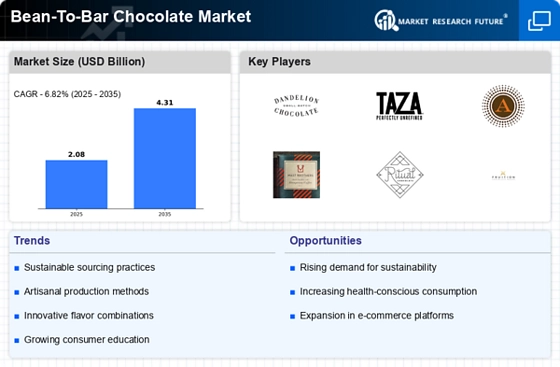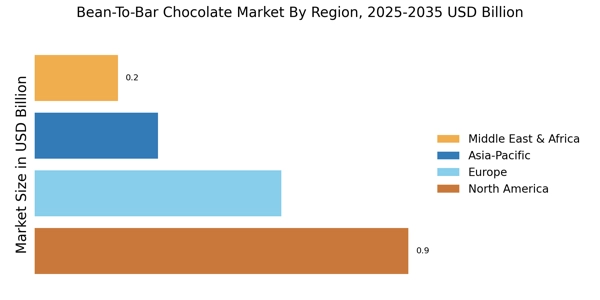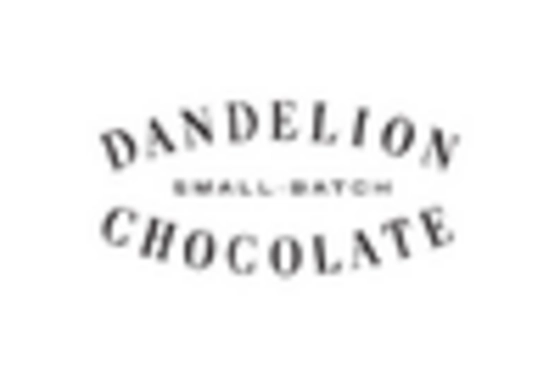The Bean-To-Bar Chocolate Market is currently characterized by a dynamic competitive landscape, driven by increasing consumer demand for high-quality, ethically sourced chocolate. Key players are strategically positioning themselves through innovation, sustainability initiatives, and regional expansion. Companies such as Dandelion Chocolate (US), Taza Chocolate (US), and Amano Artisan Chocolate (US) are at the forefront, each adopting unique operational focuses that collectively shape the market's competitive environment. Dandelion Chocolate (US) emphasizes direct trade relationships with cacao farmers, enhancing quality and transparency, while Taza Chocolate (US) is known for its commitment to organic and stone-ground chocolate, appealing to health-conscious consumers. Amano Artisan Chocolate (US) focuses on small-batch production, which allows for meticulous quality control and unique flavor profiles, thereby differentiating itself in a crowded market.
The market structure appears moderately fragmented, with numerous small to medium-sized players alongside larger brands. Key business tactics include localizing manufacturing to reduce costs and optimize supply chains, which is particularly relevant in the context of rising global logistics costs. The collective influence of these key players fosters a competitive environment where innovation and quality are paramount, as companies strive to capture the attention of discerning consumers who prioritize ethical sourcing and artisanal craftsmanship.
In August 2025, Dandelion Chocolate (US) announced the opening of a new production facility in San Francisco, aimed at increasing its capacity to meet growing demand. This strategic move not only enhances their operational efficiency but also reinforces their commitment to local sourcing and community engagement. By expanding their production capabilities, Dandelion Chocolate (US) positions itself to better serve its customer base while maintaining its high standards of quality and sustainability.
In July 2025, Taza Chocolate (US) launched a new line of vegan chocolate bars, responding to the increasing consumer trend towards plant-based diets. This product innovation is significant as it aligns with the growing demand for healthier, ethical alternatives in the chocolate market. By diversifying its product offerings, Taza Chocolate (US) not only attracts a broader audience but also strengthens its brand identity as a leader in organic and sustainable chocolate production.
In September 2025, Amano Artisan Chocolate (US) entered into a partnership with a local cacao cooperative in Ecuador, enhancing its supply chain transparency and sustainability efforts. This collaboration is strategically important as it allows Amano Artisan Chocolate (US) to secure high-quality cacao while supporting local farmers. Such partnerships are increasingly vital in the current market, where consumers are more informed and concerned about the origins of their food.
As of October 2025, current trends in the Bean-To-Bar Chocolate Market indicate a strong emphasis on digitalization, sustainability, and the integration of artificial intelligence in production processes. Strategic alliances are shaping the landscape, enabling companies to leverage shared resources and expertise. Looking ahead, competitive differentiation is likely to evolve, with a pronounced shift from price-based competition to a focus on innovation, technology, and supply chain reliability. Companies that can effectively navigate these trends will likely emerge as leaders in the market.


















Leave a Comment